Updated Febuary 15, 2022, at 2:35 p.m. PST (5:35 p.m. EST):
Several weeks after the end of a dust storm on Mars, the solar panels of NASA’s InSight lander are producing almost as much power as they did before the storm. That power level should enable the lander to continue science operations into the summer.
The team anticipates that continued dust accumulation will progressively diminish the spacecraft’s overall power budget in the months ahead and has been carefully conserving energy by turning on science instruments for limited periods of time. Having completed all primary mission science objectives, the goal now is to enable the spacecraft to operate through the end of its extended mission in December. A passing whirlwind that removes dust or a new dust storm that increases dust accumulation could alter the timeline.
Updated January 19, 2022, 9:00 a.m. PST (12:00 p.m. EST):
NASA’s InSight has exited safe mode and resumed normal operations, although its science instruments remain off. Skies appear to be clearing of dust above the spacecraft. Over the next two weeks, the mission team will assess the effects of dust accumulation on the lander’s power.
The lander has taken measures to conserve energy; engineers aim to return to normal operations next week.
NASA’s InSight lander is stable and sending health data from Mars to Earth after going into safe mode Friday, January 7, following a large, regional dust storm that reduced the sunlight reaching its solar panels. In safe mode, a spacecraft suspends all but its essential functions.
The mission’s team reestablished contact with InSight on January 10, finding that its power was holding steady and, while low, was unlikely to be draining the lander’s batteries. Drained batteries are believed to have caused the end of NASA’s Opportunity rover during an epic series of dust storms that blanketed the Red Planet in 2018.
Even before this recent dust storm, dust had been accumulating on InSight’s solar panels, reducing the lander’s power supply. Using a scoop on the lander’s robotic arm, InSight’s team came up with an innovative way to reduce the dust on one panel, and gained several boosts of energy during 2021, but these activities become increasingly difficult as available energy decreases.
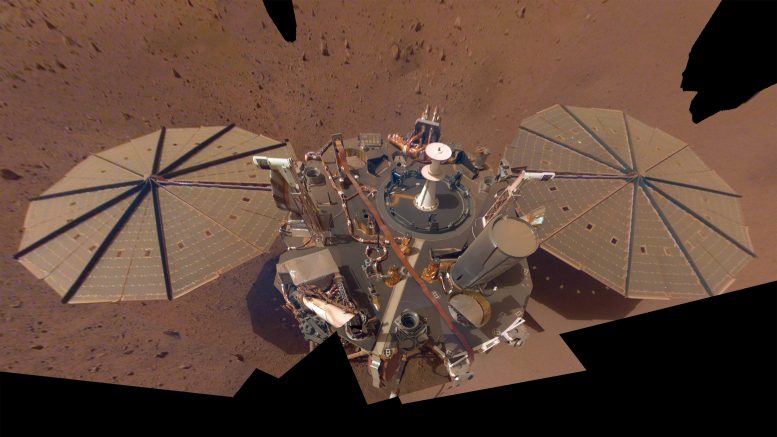
This selfie of NASA’s InSight lander is a mosaic made up of 14 images taken on March 15 and April 11, 2019 – the 106th and 133rd Martian days, or sols, of the mission – by InSight’s Instrument Deployment Camera, located on its robotic arm.
Credit: NASA/JPL-Caltech. Credit: NASA/JPL-Caltech
Dust storms can affect solar panels in two ways: Dust reduces sunlight filtering through the atmosphere, and it can also accumulate on the panels. Whether this storm will leave an additional layer of dust on the solar panels remains to be determined.
The current dust storm was first detected by the Mars Color Imager (MARCI) camera aboard NASA’s Mars Reconnaissance Orbiter, which creates daily color maps of the entire planet. Those maps allow scientists to monitor dust storms and can serve as an early warning system for spacecraft on the Martian surface. InSight’s team received data indicating the regional storm is waning.
The whirlwinds and gusts of dust storms have helped to clear solar panels over time, as with the Spirit and Opportunity Mars rover missions. While InSight’s weather sensors have detected many passing whirlwinds, none have cleared any dust.
InSight’s engineers are hopeful they will be able to command the lander to exit safe mode next week. This will allow more flexibility in operating the lander, as communication, which requires a relatively large amount of energy, is limited in safe mode to conserve battery charge.
InSight landed on Mars on November 26, 2018, to study the inner structure of the planet, including its crust, mantle, and core. The spacecraft achieved its science objectives before its prime mission ended a year ago. NASA then extended the mission for up to two years, to December 2022, based on the recommendation of an independent review panel composed of experts with backgrounds in science, operations, and mission management.
More About the Mission
JPL manages InSight for NASA’s Science Mission Directorate. InSight is part of NASA’s Discovery Program, managed by the agency’s Marshall Space Flight Center in Huntsville, Alabama. Lockheed Martin Space in Denver built the InSight spacecraft, including its cruise stage and lander, and supports spacecraft operations for the mission.
A number of European partners, including France’s Centre National d’Études Spatiales (CNES) and the German Aerospace Center (DLR), are supporting the InSight mission. CNES provided the Seismic Experiment for Interior Structure (SEIS) instrument to NASA, with the principal investigator at IPGP (Institut de Physique du Globe de Paris). Significant contributions for SEIS came from IPGP; the Max Planck Institute for Solar System Research (MPS) in Germany; the Swiss Federal Institute of Technology (ETH Zurich) in Switzerland; Imperial College London and Oxford University in the United Kingdom; and JPL. DLR provided the Heat Flow and Physical Properties Package (HP3) instrument, with significant contributions from the Space Research Center (CBK) of the Polish Academy of Sciences and Astronika in Poland. Spain’s Centro de Astrobiología (CAB) supplied the temperature and wind sensors.

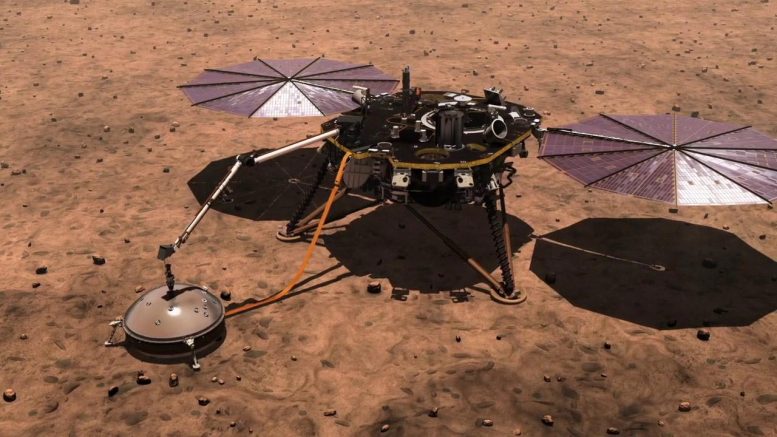

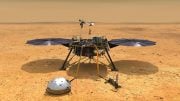
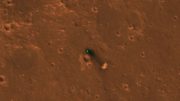
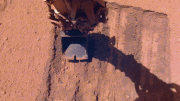
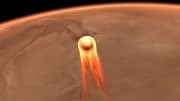
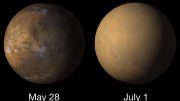
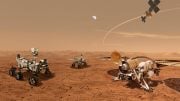
Babu G. Ranganathan*
(B.A. Bible/Biology)
POSSIBLY MILLIONS OF TONS OF VOLCANIC EARTH SOIL REACHED MARS (Newsweek)
A Newsweek article of September 21, 1998, p.12 mentions the high possibility of Earth life on Mars because of millions of tons of Earth soil ejected into space from ancient volcanic explosions. “We think there’s about 7 million tons of earth soil sitting on Mars”, says USC scientist Kenneth Nealson. “You have to consider the possibility that if we find life on Mars, it could have come from the Earth” [Weingarten, T., Newsweek, September 21, 1998, p.12]. This may also explain why life forms may exist on Venus, again because they originated from Earth.
In the Earth’s past there was powerful volcanic activity which could have easily spewed dirt and rocks containing microbes and life into outer space which not only could have eventually reached Mars but also ended up traveling in orbit through space that we now know as meteors, comets, and asteroids. This would mean life forms found in meteorites originated from Earth in the first place.
Secular scientists have a different explanation from creationist scientists on the volcanic eruptions of the Earth’s past. Creation scientists believe, as Genesis teaches, that as the fountains of the deep were opened to release water for the world-wide flood the force of the eruptions could have indeed spewed great amounts of earth soil into space.
Life could not have evolved. A partially evolved cell would quickly disintegrate under the effects of random forces of the environment, especially without the protection of a complete and fully functioning cell membrane. A partially evolved cell cannot wait millions of years for chance to make it complete and living! In fact, it couldn’t have even reached the partially evolved state.
Having the right conditions and raw material for life do not mean that life can originate or arise by chance. Stanley Miller, in his famous experiment in 1953, showed that individual amino acids (the building blocks of life) could come into existence by chance. But, it’s not enough just to have amino acids. The various amino acids that make-up life must link together in a precise sequence, just like the letters in a sentence, to form functioning protein molecules. If they’re not in the right sequence the protein molecules won’t work. It has never been shown that various amino acids can bind together into a sequence by chance to form protein molecules. Even the simplest cell is made up of many millions of various protein molecules.
The probability of just an average size protein molecule arising by chance is 10 to the 65th power. Mathematicians have said any event in the universe with odds of 10 to 50th power or greater is impossible! The late great British scientist Sir Frederick Hoyle calculated that the odds of even the simplest cell coming into existence by chance is 10 to the 40,000th power! How large is this? Consider that the total number of atoms in our universe is 10 to the 82nd power.
Also, what many don’t realize is that Miller had a laboratory apparatus that shielded and protected the individual amino acids the moment they were formed, otherwise the amino acids would have quickly disintegrated and been destroyed in the mix of random energy and forces involved in Miller’s experiment.
Miller’s experiment produced equally both left-handed and right-handed amino acids, but all living things strictly require only left-handed amino acids. If a right-handed amino acid gets into the chain the protein won’t work.
There is no innate chemical tendency for the various amino acids to bond with one another in a sequence. Any one amino acid can just as easily bond with any other. The only reason at all for why the various amino acids bond with one another in a precise sequence in the cells of our bodies is because they’re directed to do so by an already existing sequence of molecules found in our genetic code.
Of course, once you have a complete and living cell then the genetic code and biological machinery exist to direct the formation of more cells, but how could life or the cell have naturally originated when no directing code and mechanisms existed in nature? Read my Internet article: HOW FORENSIC SCIENCE REFUTES ATHEISM.
Visit my newest Internet site: THE SCIENCE SUPPORTING CREATION
Author of popular Internet article, TRADITIONAL DOCTRINE OF HELL EVOLVED FROM GREEK ROOTS
* I have had the privilege of being recognized in the 24th edition of Marquis “Who’s Who In The East” for my writings on religion and science, and I have given successful lectures (with question and answer time afterwards) defending creation from science before evolutionist science faculty and students at various colleges and universities.